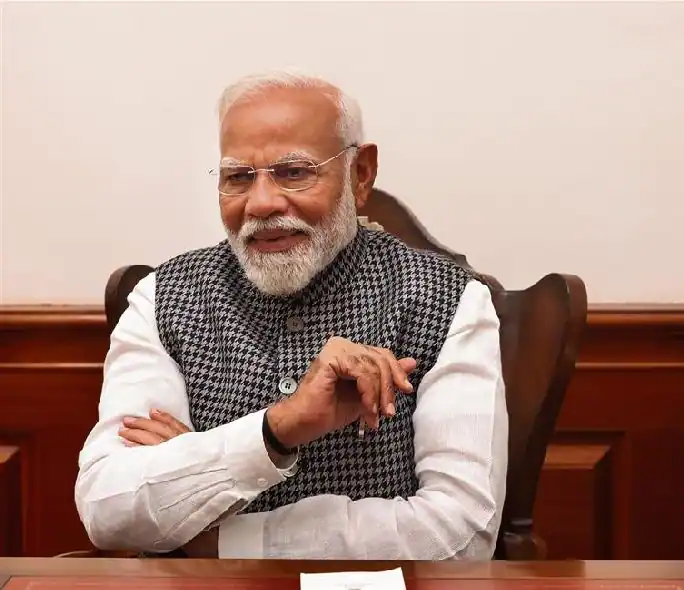It ought not to have come as a surprise that Om Birla was nominated by the NDA led by Prime Minister Narendra Modi to a second term as Speaker of the Lok Sabha. The repeat choice of Speaker was yet another signal that 2024-29 would be the period of Modi 3.0, just as 2019-24 was the period of Modi 2.0. From the time that the results of the 2024 Lok Sabha polls were announced, the Prime Minister conveyed to President Droupadi Murmu that the invitation given to him to form the next government had been accepted. And thereby Modi 3.0 had begun. Ill-informed speculation has been swirling around that the new Union Government would not last a full term. The reality is that apart personal friendships, it is their common interest in the continuation of this government that will ensure that the TDP and the JDU remain partners of the BJP for the full term of the present Lok Sabha. Chief Minister Chandrababu Naidu would like to see his carefully thought out plan for a rejuvenated Andhra Pradesh, making AP a state that has fully attuned itself to the 21st century, takes shape during the next five years. His son and political heir, Nara Lokesh, will assist the AP CM in his difficult task. In the process, Minister Lokesh will become expert in handling the nuts and bolts of not just politics but the pathway to swift economic progress.
In Bihar, Chief Minister Nitish Kumar knows that he has to overcome the image of unreliability caused by his shifts in allegiance, and that in Prime Minister Modi he has a partner as committed to the progress of Bihar as he is. Those doubting Narendra Modi’s unique skills in navigating personal relationships would do well to, for example, look at relations between India and the US. Bilateral ties have prospered to an unprecedented degree since 2014, a decade that witnessed three vastly dissimilar US Presidents take office, Barack Obama, Donald Trump and now Joe Biden. With each of them, PM Modi swiftly established a personal rapport. Again, more than shared friendships, it is the shared commonality of US and Indian security interests in the Indo-Pacific that is the foundation of the relationship between New Delhi and Washington. From 2014, Prime Minister Modi has understood the nature and complexity of the challenge facing democracies in the Indo-Pacific from
In another unmistakable sign of continuity, key ministers in Modi 2.0 have been continued in Modi 3.0. Whether it be Home Minister Amit Shah, Defence Minister Rajnath Singh, External Affairs Minister S. Jaishankar or Finance Minister Nirmala Sitharaman, all four have seamlessly continued in the same role once Modi 3.0 has started, together with other important ministers such as Nitin Gadkari and Piyush Goyal. Key officials have been retained in their existing roles, all of which conveys a clear message, which is that the process of transformation begun during Modi 1.0 and was continued during Modi 2.0 continues now that Modi 3.0 has arrived. The Prime Minister will most likely not be travelling to Almaty for the SCO Summit on account of Parliamentary work, but is expected to travel to Moscow next month to meet President Vladimir Putin, after having attended the G-7 summit in Italy. Just as Asia is changing, so is Europe.
Foreign policy is a key driver where the progress of a country is concerned, as policies towards the economy. At a growth rate that is now close to 9%, India is the fastest growing major economy in the world, and is on track to be the third largest economy in the world before 2029. During Modi 3.0, stable double digit growth rates are on track to be witnessed. The forthcoming Union Budget is likely to indicate how such a transformation will take place. Youth is the dominant demographic in India, and high growth is needed to ensure enough quality jobs for them. Given that, the young in India will in their hundreds of millions be able to add to the economy through using the potential that the young in India have in abundance. Modi 3.0 is also looking at infrastructure, technology, healthcare and education to ensure constant betterment in such verticals. During Modi 3.0, India needs to displace other countries in being the country where investors leaving risky shores can best settle in by ensuring an ambience designed to boost domestic and foreign investment on a scale sufficient to create more jobs. It is a challenging task, but Prime Minister Modi has been gearing up for accomplishing precisely this since 2014, and is on track to ensure success in meeting this objective.

